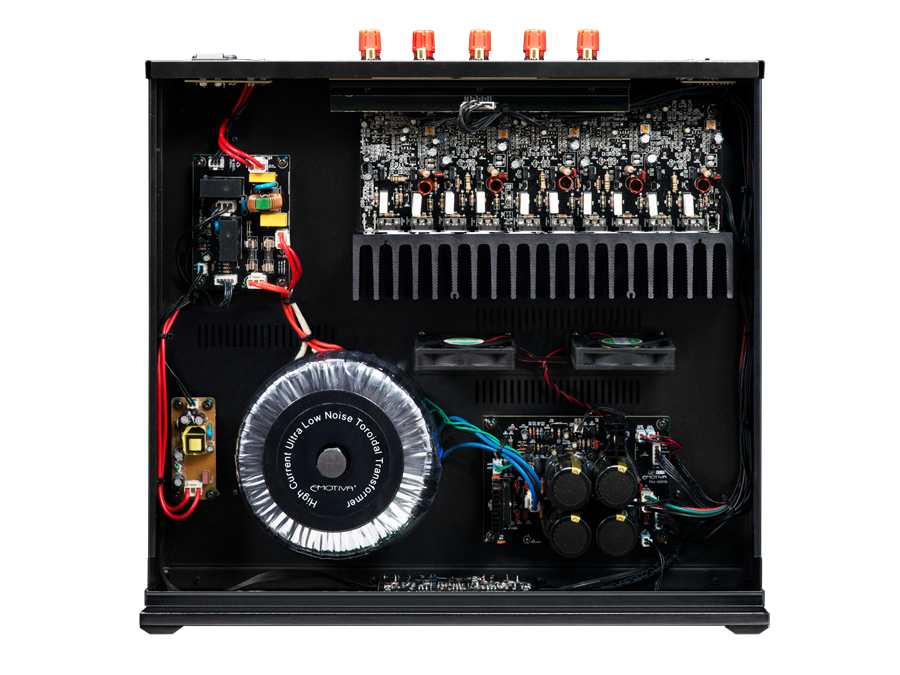Well there is a difference between 400 and 40 watts. And one big differentiator is the cost to build these units and the materials it takes. Though my listening levels are about 1 to 2 watts, you could use 40 watts of power pretty consistently in home theater though perhaps not constantly, very often throughout a movie.
Emotiva had on occassion tried to use this game of advertising implying a higher power than what one thinks.
They used to have a UPA-5 which was this ginormous thing with 5 independent channels amps and heat sinks and a large torroidal 600VA transformer with 90,000 mf cap selling at a paltry $585 free shipping.
It was rated 125X5 and 185X5 weight 58 pounds. Now this was an all channels rating which was their standard rating they used for all amps.
Their current replacement amp is the A-500 a 5 channel amp
which looks like this:
Anybody looking will see that it has one single amp blade. Much smaller heat sink. Two Fans. An unspecified torroid (about 300VA) and unspecified capacitance probably close to 30,000 mf or less. It was rated on their gallery page as
5 channel amp 110 watts per channel. (And 195 watts @ 4 ohms).
Weight 26 pounds
Sells for $500
Now anybody looking at these two amps on the gallery page comparing the amps would see this as being a replacement amp with similar ratings. But it's not even close.
Looking closer at the specs one sees that it's only 80 watts per channel all channels driven @ 8 ohms and NO 4 ohm rating given (not an accident). After protests by me and some other members they changed the wording and was more clear about exactly what this amp is and isn't capable of.
A better way to honestly rate it the way they used to with all channels driven continuous would have been 80 wattsX5 8 ohms amp which doesn't look nearly as good as their older stuff.
So it's not a trivial thing to rate amps in specific ways. It takes a lot for amps to be able to provide continous power and all channels driven power and they are the differentiators between them and significantly lesser amp. An amp that can provide 1000 watts continuos power like my XPA-1 gen 2 amp and an amp that does 1000 watts "burst" but can't manage over 60 watts of power continuous is a big difference. It takes money materials, and build (that you are paying for) to have high continuous watt ratings.
The Ncore wouldn't look as good if it was advertised as a 2X40 watt amp for $2000 despite its stellar distortion measurements. But that's what it is.




